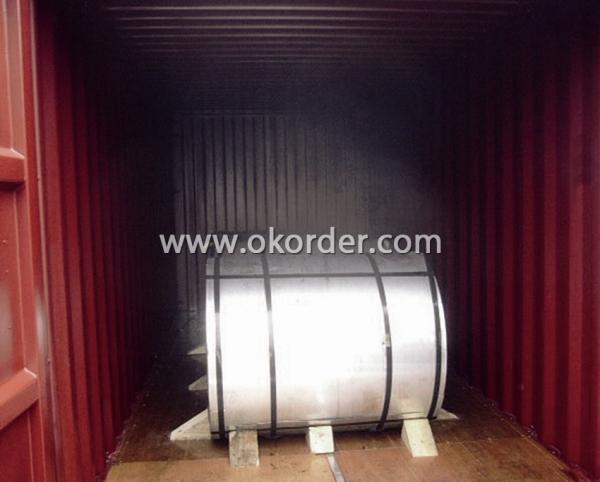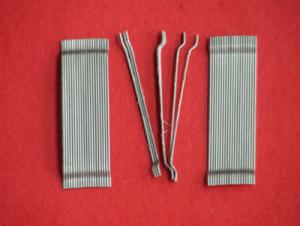Cold Rolled Steel JISG3141- Bright Anneal
- Loading Port:
- China Main Port
- Payment Terms:
- TT or L/C
- Min Order Qty:
- 25M/T m.t.
- Supply Capability:
- 50000 Metric Tons Per Month m.t./month
OKorder Service Pledge
OKorder Financial Service
You Might Also Like
Specifications Of Cold Rolled Steel JISG3141- Bright Anneal
|
COLD ROLLED STEEL | |
|
Thickness |
0.08mm-4.00mm |
|
Width |
30mm-2000mm |
|
Sheets Length |
+0mm-6000mm |
|
Coil inner Diameter |
508mm or 610mm |
|
Surface Treatment |
●Matt Finish/Bright Finish ●Oiling/Dry |
|
Annealing Methods |
●Bright Anneal/Black Anneal |
|
Coil Weight |
1mt-25mt |
Standard and Grade Of Cold Rolled Steel JISG3141- Bright Anneal
|
|
JIS G3141-2005 |
BSEN10130-2006 |
ASTM A1008-12a |
|
Commercial Quality |
SPCC |
DC01 |
CS Types A/B/C |
|
Drawing Quality |
SPCD |
DC03 |
DS Types A/B |
|
Deep Drawing Quality |
SPCE SPCF(non aging) |
DC04 |
DDS |
|
Extra Deep Drawing Quality |
SPCG(non aging) |
DC05/06 |
EDDS |
Definition Of Cold Rolled Steel JISG3141- Bright Anneal
Cold rolling means that hot rolled steel coil is rolled below recrystallization temperature after pickling, and its finished product is full hard coil. After annealing process for full hard coil, the finished product is cold rolled production. The thin gauge cold rolled steel sheet and strip steel have advantages of low surface roughness, high dimension accuracy and good mechanical properties etc, and which have been widely used in auto manufacturing, home appliance, architecture, aviation, precision instrument, hardware and enameling industry etc.


Application Of Cold Rolled Steel JISG3141- Bright Anneal
It is the based material for galvanized steel coil and pre-painted galvanized steel coil. It is widely used in light industry for making tank, furniture, pipe, refrigerators, washers, freezer plate, air conditioner, micro-wave oven, water heater, soot-such machine, electric rice cooker, electric roaster oven, dryers and automobile etc. In the other application industries, it’s mainly used for enameling, office furniture, burglarproof door, electronic element, fastener battery, hardware, automotive fitting etc.
Packaging & DeliveryOf Cold Rolled Steel JISG3141- Bright Anneal
The packing of coils consists of anti-damp paper, PVC film, hardboard paper, steel box, strapped with steel strips, fitted with locks and edge protectors and guarantees the optimal condition of the delivered goods. Each coil can be additionally fitted with wooden/steel skids(eye to the side) or wooden pallets(eye to the sky). Eye to sky package: Anti-damp paper inside full wrapped with plastic film, iron sheet outside on wooden pallet in 20 feet container with 25mt.

- Q: How is steel used in the production of agricultural machinery and equipment?
- Steel is commonly used in the production of agricultural machinery and equipment due to its high strength and durability. It is used in various components such as frames, bodies, and blades to provide the necessary structural integrity and resistance to the demanding conditions of agricultural operations. Steel's versatility allows for the fabrication of complex shapes and designs, enabling the machinery to efficiently perform tasks such as plowing, harvesting, and transporting crops. Additionally, steel's resistance to corrosion ensures that the equipment remains operational even in harsh outdoor environments.
- Q: How is steel used in the manufacturing of appliances?
- Steel is commonly used in the manufacturing of appliances due to its durability and strength. It is used to create the framework and external casing of appliances such as refrigerators, ovens, dishwashers, and washing machines. Steel's resistance to heat and corrosion makes it an ideal material for these applications, ensuring that appliances remain sturdy and long-lasting. Additionally, steel is also used for internal components and mechanisms within appliances, providing stability and support for various moving parts.
- Q: How does steel sheet metal fabrication work?
- Steel sheet metal fabrication involves the process of shaping and manipulating steel sheets into desired forms and structures using various techniques such as cutting, bending, and assembling. This is typically done through the use of specialized machinery and tools, such as laser cutters, press brakes, and welders. The steel sheets are first cut into the required shape, either manually or through automated processes. Then, they are bent or formed using press brakes to achieve the desired angles or curves. Finally, the individual parts are assembled together through welding, fastening, or other joining methods, resulting in a finished steel sheet metal product.
- Q: What are the different types of steel fasteners and their uses in the marine industry?
- In the marine industry, there are several types of steel fasteners commonly used. These include stainless steel bolts, screws, nuts, washers, and rivets. Stainless steel fasteners are preferred in this industry due to their excellent corrosion resistance properties. Bolts are typically used in heavy-duty applications, such as securing large components or structural elements. Screws are commonly used for fastening smaller components, while nuts and washers are used in conjunction with bolts to provide additional stability and prevent loosening. Rivets are another type of fastener used in marine applications, particularly for joining thin sheets of metal. They provide a secure and permanent connection, ideal for areas with high vibration or where welding may not be feasible. Overall, these steel fasteners play a vital role in the marine industry by ensuring the structural integrity, safety, and longevity of various components and structures, even in harsh saltwater environments.
- Q: How is steel used in the construction of stadiums and sports facilities?
- Steel is commonly used in the construction of stadiums and sports facilities due to its strength, durability, and versatility. It is used for the framework, roofing, and support structures, allowing for large open spaces and grand designs. Steel also provides the necessary structural integrity to withstand heavy loads, ensuring the safety of the venue. Additionally, steel allows for quick and efficient construction, making it a preferred choice in the fast-paced world of stadium development.
- Q: How are steel forgings used in the production of mining equipment?
- Steel forgings are commonly used in the production of mining equipment due to their superior strength and durability. They are used to create various components such as gears, shafts, and heavy-duty structural parts that can withstand the harsh conditions and heavy loads encountered in mining operations. The forging process ensures a higher quality and integrity of the steel, making it suitable for withstanding extreme forces and prolonged use in mining equipment.
- Q: How is steel forgings inspected for quality assurance?
- Steel forgings are inspected for quality assurance through various methods, including visual inspection, dimensional checks, and non-destructive testing. Visual inspection involves examining the surface for any defects, such as cracks or porosity. Dimensional checks ensure that the final product meets the required specifications and tolerances. Non-destructive testing techniques, such as ultrasonic or magnetic particle testing, are used to detect internal defects or irregularities. These inspection methods help ensure the quality and integrity of steel forgings before they are used in various applications.
- Q: What are the different types of steel gratings and their applications?
- There are several types of steel gratings, including welded steel grating, press-locked steel grating, and riveted steel grating. Welded steel grating is commonly used for industrial flooring, catwalks, and stair treads due to its durability and strength. Press-locked steel grating is often used for architectural and decorative purposes, such as walkways, platforms, and sunscreens. Riveted steel grating is suitable for heavy-duty applications such as bridge decking, truck platforms, and loading docks.
- Q: How are steel products used in the manufacturing of packaging materials?
- Steel products are commonly used in the manufacturing of packaging materials due to their strength and durability. Steel can be used to create various packaging components such as cans, barrels, and drums. These steel packaging materials are widely used in industries such as food and beverage, chemicals, and pharmaceuticals to protect the contents from damage, contamination, and external factors. Additionally, steel packaging is recyclable, making it an environmentally-friendly choice for packaging solutions.
- Q: How are steel products used in the construction of high-rise buildings?
- Steel products are extensively used in the construction of high-rise buildings due to their superior strength, durability, and flexibility. Steel is commonly employed for structural frameworks, beams, columns, and reinforcement in high-rise construction. Its high strength-to-weight ratio allows for taller and lighter buildings, while its flexibility enables architects to design complex and innovative structures. Additionally, steel's resistance to fire, earthquakes, and adverse weather conditions makes it a reliable choice for ensuring the safety and stability of high-rise buildings.
1. Manufacturer Overview
| Location | Jiangsu, China |
| Year Established | 2003 |
| Annual Output Value | US$1 Million - US$2.5 Million |
| Main Markets | Southern Asia; America; South America; Eastern Europe |
| Company Certifications | ISO 9000 ISO 14000 OHSAS 18000 |
2. Manufacturer Certificates
| a) Certification Name | |
| Range | |
| Reference | |
| Validity Period |
3. Manufacturer Capability
| a) Trade Capacity | |
| Nearest Port | Shanghai |
| Export Percentage | 1% - 10% |
| No.of Employees in Trade Department | 100 People |
| Language Spoken: | English; Chinese |
| b) Factory Information | |
| Factory Size: | Above 200,000 square meters |
| No. of Production Lines | 14 |
| Contract Manufacturing | Design Service Offered |
| Product Price Range | Average |
Send your message to us
Cold Rolled Steel JISG3141- Bright Anneal
- Loading Port:
- China Main Port
- Payment Terms:
- TT or L/C
- Min Order Qty:
- 25M/T m.t.
- Supply Capability:
- 50000 Metric Tons Per Month m.t./month
OKorder Service Pledge
OKorder Financial Service
Similar products
Hot products
Hot Searches
Related keywords




























